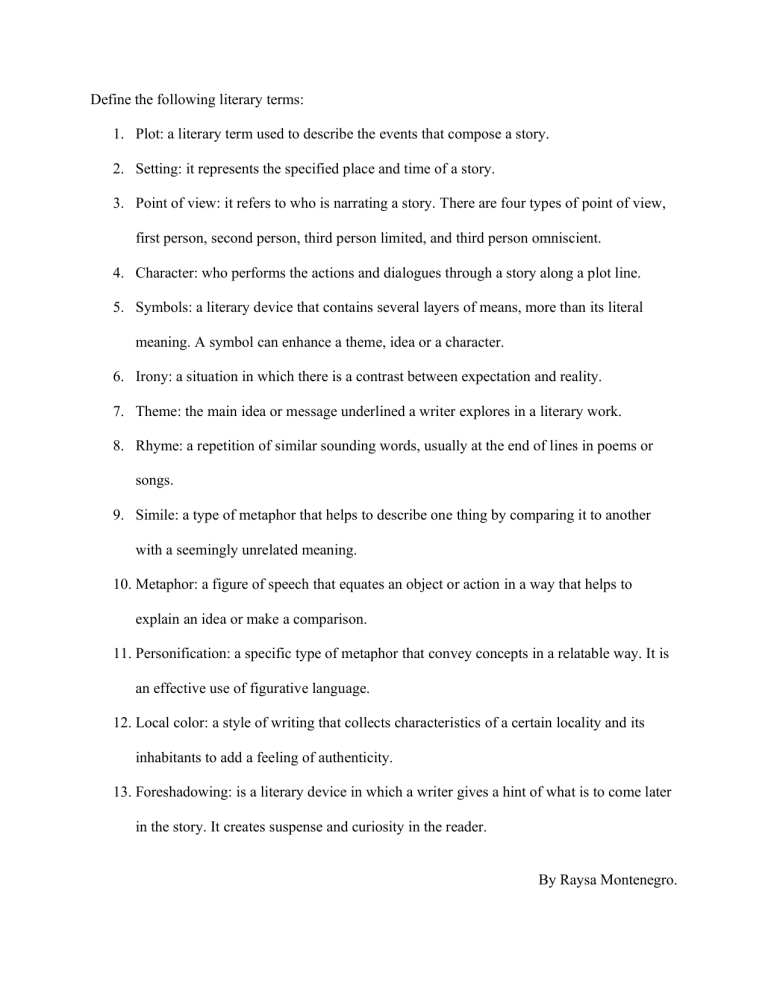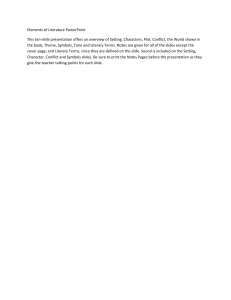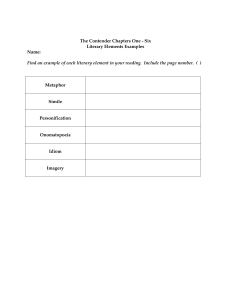
Define the following literary terms: 1. Plot: a literary term used to describe the events that compose a story. 2. Setting: it represents the specified place and time of a story. 3. Point of view: it refers to who is narrating a story. There are four types of point of view, first person, second person, third person limited, and third person omniscient. 4. Character: who performs the actions and dialogues through a story along a plot line. 5. Symbols: a literary device that contains several layers of means, more than its literal meaning. A symbol can enhance a theme, idea or a character. 6. Irony: a situation in which there is a contrast between expectation and reality. 7. Theme: the main idea or message underlined a writer explores in a literary work. 8. Rhyme: a repetition of similar sounding words, usually at the end of lines in poems or songs. 9. Simile: a type of metaphor that helps to describe one thing by comparing it to another with a seemingly unrelated meaning. 10. Metaphor: a figure of speech that equates an object or action in a way that helps to explain an idea or make a comparison. 11. Personification: a specific type of metaphor that convey concepts in a relatable way. It is an effective use of figurative language. 12. Local color: a style of writing that collects characteristics of a certain locality and its inhabitants to add a feeling of authenticity. 13. Foreshadowing: is a literary device in which a writer gives a hint of what is to come later in the story. It creates suspense and curiosity in the reader. By Raysa Montenegro.








